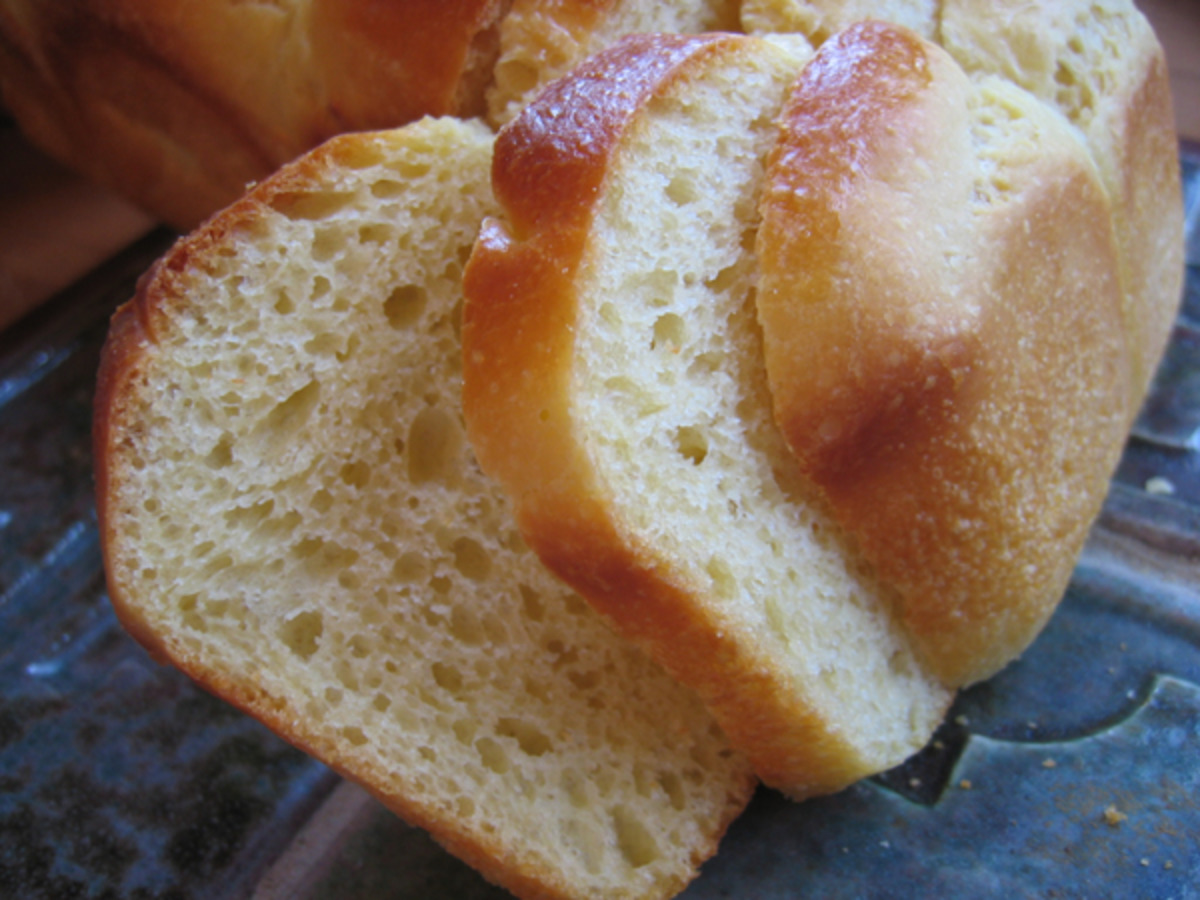Brioche
5.0
(58)
Your folders
Your folders
Prep Time: 45 minutes
Cook Time: 30 minutes
Total: 1 hours, 15 minutes
Servings: 3
Cost: $5.53 /serving
Author : P48422

Ingredients
Export 6 ingredients for grocery delivery
Instructions
Step 1
Put the milk, yeast, egg and 1 cup of the flour in the bowl of a heavy duty mixer.
Step 2
Mix the ingredients together with a rubber spatula, mixing just until everything is blended.
Step 3
Sprinkle over the remaining cup of flour to cover the sponge.
Step 4
Set the sponge aside to rest uncovered for 30-40 minutes.
Step 5
After this resting time, the flour coating will crack, your indication that everything is moving along properly.
Step 6
Add the sugar, salt, eggs, and 1 cup of the flour to the sponge.
Step 7
Set in the mixer, attach the dough hook, and mix on low speed for a minute or two, just until the ingredients look as if they are about to come together.
Step 8
Still mixing, sprinkle in 1/2 cup more flour.
Step 9
When the flour is incorporated, increase the mixer speed to medium and beat for about 15 minutes, stopping to scrape down the hook and bowl as needed.
Step 10
During this mixing period, the dough should come together, wrap itself around the hook and slap the sides of the bowl.
Step 11
In order to incorporate the butter into the dough, you must work the butter until it is the same consistency as the dough.
Step 12
You can bash the butter into submission with a rolling pin or give it kinder and gentler handling by using a dough scraper to smear it bit by bit across a smooth work surface.
Step 13
When it is ready, the butter will be smooth, soft, and still cool- not warm, oily or greasy.
Step 14
With the mixer on medium-low speed, add the butter a few tablespoons at a time.
Step 15
This is the point at which you'll think you've made a huge mistake, because the dough that you worked so hard to make smooth will fall apart- don't worry, don't panic- carry on.
Step 16
When all of the butter has been added, raise the mixer speed to medium-high for a minute, then reduce the speed to medium and beat the dough for about 5 minutes, or until you once again hear the dough slapping against the sides of the bowl.
Step 17
Clean the sides of the bowl frequently as you work; if it looks as though the dough is not coming together after 2-3 minutes, add up to 1 tablespoon more flour.
Step 18
When you're finished, the dough should feel somewhat cool.
Step 19
It will be soft and sill sticky and may cling slightly to the sides and bottom of the bowl.
Step 20
FIRST RISE: Transfer the dough to a very large buttered bowl, cover tightly with plastic wrap, and let it rise at room temperature until doubled in bulk, 2- 2 1/2 hours.
Step 21
SECOND RISE AND CHILL: Deflate the dough by placing your fingers under it, lifting a section of dough, and then letting it fall back into the bowl.
Step 22
Work your way around the circumference of the dough, lifting and releasing.
Step 23
Cover the bowl tightly with plastic wrap and refrigerate the dough overnight, or for at least 4-6 hours, during which time it will continue to rise and may double in size again.
Step 24
AFTER THIS LONG CHILL, THE DOUGH IS READY TO USE IN ANY BRIOCHE RECIPE.
Step 25
STORING: If you are not going to use or bake the dough after it's second rise, deflate it, wrap it airtight, and store it in the freezer.
Step 26
The dough can remain frozen for up to a month.
Step 27
Thaw the dough, still wrapped, in the refrigerator overnight and use it directly from the refrigerator.
Step 28
TO BAKE IN LOAVES: Divide the dough into thirds.
Step 29
Divide each section into 6 equal pieces, and shape each piece into a ball on a lightly floured work-surface.
Step 30
Place the balls side-by-side in a greased loaf pan so that you have 3 short rows, each with two balls of dough.
Step 31
Do the same with the other two pieces of brioche dough.
Step 32
Cover the pans with plastic and allow the dough to rise at room temperature for 2 hours, or until doubled in size.
Step 33
Preheat the oven to 375°F.
Step 34
Lightly brush each loaf with egg wash, taking care not to let the glaze dribble into the pan (it will impair the dough's rise in the oven).
Step 35
Use the ends of a pair of very sharp scissors to snip a cross in each ball of dough.
Step 36
Bake the loaves for about 30 minutes, or until an instant read thermometer reads 200°F.
Step 37
Cool to room temperature on a rack.
Step 38
NOTE: You could also use this dough to make the very finest sticky-buns you've ever eaten in your entire life, or you can press it out in a deep dish pizza pan, cover it with cream cheese mixed with powdered sugar, the put fruit slices or berries over it for a very upscale"fruit pizza".